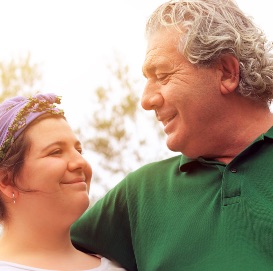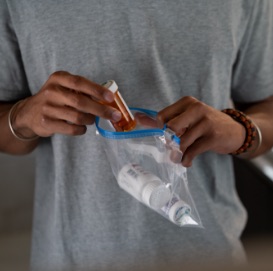WHEN YOUR CHILD IS PRESCRIBED AN OPIOID: BUILDING GOOD HABITS FOR PAIN MANAGEMENT

Use of opioids remains a serious concern, especially for youth and young adults. Opioid use — including use of prescription opioids — comes with a very high risk of addiction, injury and even death.
In 2018, misuse of opioids led to 2,500 Washington State 12th graders having tried heroin at least once and 3,500 having reported using pain killers to get high. According to NIDA, most heroin and opioid abusers started out with prescription opioids.
Building good habits around prescription medicine is key. Young people are often prescribed opioids for the first time after wisdom teeth surgery or following a sports injury like a break, a fracture or a severe sprain. Others may be prescribed opioids to help manage chronic pain due to sickle-cell anemia, cancer treatment or other pediatric pain.
A recent study from the American Academy of Pediatrics found that around 15% of adolescent emergency visits resulted in an opioid prescription — these were highest for adolescents and youth with dental conditions (nearly 60%), followed by clavicle (47%) and ankle (38%) fractures.
These prescription rates are especially concerning because teens and young adults are at increased risk of abusing opioids after receiving a prescription from a doctor, especially after prolonged use.
Why? The adolescent and teenage brain, particularly the frontal lobe, is still developing. This is the center of the brain that helps with decision making, risk assessment, organization, judgement and empathy. Because this part of the brain is not fully developed, teens are especially vulnerable to addiction.
At the same time, the brain is more active in childhood and adolescence than it will be later in life. This represents a special opportunity for children to learn healthy habits, behavior and important lessons they’ll carry the rest of their lives — including how to cautiously use and safely manage pain medication.
HOW TO KNOW IF YOUR CHILD’S PRESCRIPTION IS AN OPIOID:
Compared to over-the-counter pain medications like Tylenol or Advil, opioid pain relievers are powerful drugs — very similar to heroin in their chemical makeup, and habit-forming by their very nature. The following prescriptions are considered opioids:
• Hydrocodone (Zohydro)
• Hydrocodone + Acetaminophen (Vicodin)
• Oxycodone (Oxycontin, Roxicodone)
• Oxycodone + Acetaminophen (Percocet)
• Codeine, Morphine, Fentanyl
• Tylenol with codeine
Keep in mind, some non-opioid pain relievers (gabapentin, for example) can also lead to misuse.
SUCCESSFULLY NAVIGATING PAIN MANAGEMENT
If your teen or young adult is prescribed opioid pain relievers, make a plan to help your child safely treat pain while preventing misuse and dependence. Some ideas to consider:
Start with a conversation, and keep it going. When your child is managing pain with an opioid, communication is key. It is important to establish trust and build a strong relationship to connect on drug prevention.
• Talk to your child about the real risks of misuse.
• Be clear that the medication is not to be shared with others.
• Ask about the level of pain. Pain should diminish with time — stay alert for signs that your child is developing a dependency.
Regulate your child’s prescription, ask for partial fills. To avoid the risk of over-prescribing, consider asking your pharmacist for fewer pills at first. You may prevent your child taking medicine for longer than needed or spare pills being shared.
• Before filling your child’s prescription, understand how many pills are being prescribed, and over how long a period.
• Talk to your doctor about the minimum duration of time your child would need to take the prescription.
• Consider your child’s level of pain and check for signs of dependency before refilling.
Safely store, dispense and dispose of opioid medications. 75% of opioid misuse starts when people take medication that wasn’t prescribed for them. Commit to safely managing any opioid medications to prevent access and harm to family and friends.
• Lock up your medications in a safe-storage pouch or safe.
• Supervise your child taking the medication and count pills in the bottle to be sure they are being taken as prescribed.
• Store opioids where family or visitors can’t access them.
• Dispose of unused medication at a Take Back site.
Consider alternative pain management. It’s possible your child may not need opioids and that another medicine or treatment may help relieve pain just as effectively.
• Talk to your provider about an over the counter pain reliever (acetaminophen, for example, Tylenol) or a non-steroidal anti-inflammatory drug (NSAID).
• For chronic pain, explore alternative treatments such as physical therapy, acupuncture, chiropractic care, biofeedback or massage as
part of long-term pain management.
Be cautious and ask questions. Your health care provider, doctor, or pharmacist is there to support you. Here are some questions you may want to ask if your child is prescribed an opioid.
• Is a prescription opioid necessary to treat my child’s pain?
• How many pills are being prescribed, and over how long a period? Is it necessary to prescribe this quantity of pills?
• Should my child be screened to determine risk of substance use disorder (SUD) before this medication is prescribed?
• How will I know when my child no longer needs to take any more medication?
• What are the risks of misuse for the specific drug being prescribed to my child?
• What are signs of misuse or dependence that I should be watchful for?
• Where can I dispose of medication when it is no longer needed?
Medicines have the power to improve our lives and relieve pain. When used with care, you can help prevent opioid misuse. Remember, the conversations you have today and medication management skills you teach your child will remain with them throughout their life.
SOURCES
https://www.hhs.gov/ash/oah/adolescent-development/substance-use/drugs/opioids/index.html
https://journals.plos.org/plosmedicine/article?id=10.1371/journal.pmed.1002922
https://www.aappublications.org/news/2018/07/16/opioids071618
https://drugfree.org/parent-blog/parents-know-opioids-pain-relievers-prescribed-child/
https://pediatrics.aappublications.org/content/138/1/e20161210
www.Youth.gov; The Power of the Adolescent Brain; https://youtu.be/4S2qgEFEdKU
recent topics

GET HELP
If you or your loved ones are suffering from addiction to opioids, now is the time to get help.
GET HELP





